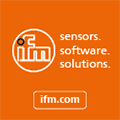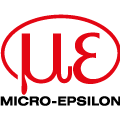
Posted to News on 20th Feb 2017, 16:26
High-performance industrial servers for the industrial channel
With inherent challenges to maintaining longevity and consistency in system production, the industrial channel has historically been unable to pair server-class performance with a long-life system. High[performance industrial servers from Corvalent solve this design limitation, embracing Intel Xeon technology in an application-ready, customisable server-class design with guaranteed production and availability of 5-7 years. Illustrated by application examples such as medical imaging, security and surveillance, and cloud and data centre processing, this article highlights the broad competitive value these long-life systems newly enable for industrial OEMs and application developers.
Industrial embedded systems must balance price, performance and system lifetime in demanding environments. This creates a unique set of challenges for industrial OEMs and application developers, often faced with sacrificing longevity by using commercially available workstation products to accommodate ever-increasing performance and storage needs. At the same time, traditional server products may create a competitive imbalance, offering longer system lifetimes but reducing price vs. performance value with a raft of costly and often unneeded certifications. Xeon-based versions of these systems have been considered too costly, offering enhanced performance but also adding complexity to development in order to fully capitalise on dual-processor capabilities.
To fill this void and maintain longevity as a core design principle, Corvalent is introducing CorServer, a long-life server-class product family, as a more thoughtful and market-focused option. CorServer's Xeon performance is customisable for unique and demanding applications, and its system production is guaranteed for a minimum of 5 years. Together these considerations create a new path for OEMs and application developers in the industrial channel - enabling cost-effective server-class performance for connected, intelligent systems and data-intensive workloads.
Why haven't Xeon platforms been used in the industrial channel before? Designed for architecting next-generation data centres, Xeon processors are optimised for software-defined infrastructures. These environments must be supercharged for efficiency, performance, and delivery of agile, real-time services via both cloud-native and traditional applications. Absent longevity and consistency, these high-end systems were considered cost prohibitive to design from the ground up; developers could find themselves spending thousands of dollars in re-qualifying platforms every 2-3 years.
Smart, configurable design
Engineering resources are wasted through redesigning systems and software, gaining new regulatory approvals, creating updated internal documentation, and more. Although versatile in supporting workloads for high performance computing, cloud systems, networking, and storage, Xeon's dual-processor technology was also less familiar to many developers - creating potential for extended development costs and timelines, or even prohibiting new product design because the process was so daunting. CorServer solves these challenges, bringing long-life Xeon performance to the server-class realm by packaging rugged board and chassis into a smart, configurable design.
In contrast to workstation products that could be no longer in production by the time an application is completely developed, CorServer is based on longevity. Corvalent's internal processes support a highly flexible materials planning programme, enabling product longevity like no other embedded platform provider. For example, while Corvalent uses only server-class processors and chipsets on Intel's embedded roadmap, company control of board and system design extends longevity even further. Corvalent owns the technology that goes into its products, eliminating compatibility issues that can arise when disparate components are used to create a system.
CorServer systems are server-class, offering a dual-processor platform with no unnecessary third-party hardware certifications. For developers, this focused approach reduces costs while ensuring performance with industry operating systems and advances such as Error Correcting Code (ECC), optimised thermal dissipation, and more robust remote access management. More reliable and functional than a commercial controller deployed at the source, CorServer's dual-processor performance is optimised for Internet of Things (IoT) and industrial number-crunching applications. Many of these storage-heavy applications benefit from a high-performance server-class platform, with its ability to eliminate bottlenecks and better enable real-time data processing. Data-intensive applications gain an operational advantage with more advanced data management close to the source, for example reducing challenges of latency and bandwidth by transmitting processed, encrypted files rather than massive amounts of raw data.
Most significantly, development of the CorServer product family is informed by Corvalent's expertise with full custom design. The company primarily supports OEMs and application developers with motherboards, chassis, and peripherals that are custom-built to ensure rugged performance in a long-life product. CorServer as an application-ready system, builds on this knowledge to provide a complete system proven to industrial needs and standards. Applications in Big Data analytics, real-time medical imaging, cloud or data centre computing, security and surveillance, and more can be developed using a cost-effective, long-term deployable option that was not previously available.
CorServer's key features build on performance of the Xeon E5-2600 v4 processor family, characterised by Intel as "the engine for digital transformation in the data centr" and designed to handle diverse workloads.
Notable performance improvements
Xeon allows developers to optimise processing speed and compute functions, sharing resources for significantly improved overall performance. This may be critical for certain applications currently using a dual server; they may be pushing the boundaries of performance, for example a medical imaging system that requires immense compute power to render high-resolution images quickly. By using a server-class platform such as CorServer, the hardware may divide computing tasks to minimise pressure on any single processor. Depending on the operating system and primarily the application itself, two CPUs can divide computing resources for notable performance improvements. While some developers may opt for application re-design to gain performance specifically intended for dual processors, others will find compelling advantages simply by using the dual-processor platform to scale up performance of single-node applications.
Xeon E5-2600 processors also integrate Intel Hyper-Threading Technology (Intel HT Technology), enabling multiple threads to run on each core. Working in conjunction with Intel Turbo Boost, processing dynamically adapts to the workload at hand and processes multiple threads simultaneously. Inactive cores are automatically disabled and throughput is increased on busy cores, resulting in improving overall performance for threaded applications. For developers and OEMs, this means that compute tasks are more efficient - systems can run the most demanding applications while remaining highly responsive, and also maintain headroom for new capabilities.
Server-class systems operate with a greater range of operating system (OS) options than standard workstations or high performance desktop systems. These can include Windows Embedded, Linux and VMWare, as well the newest real-time operating systems (RTOS) such as Red Hat's Enterprise MRG Realtime. MRG allows developers to fine-tune application performance, for example implementing CorServer for applications that require highly deterministic, low latency responses to events. A data centre deployment illustrates this server-class advantage; an optimised, industrial OS would be required for critical applications of data management and storage, providing tools and performance necessary to manage RAID interfaces, drives, and data.
High-reliability Error Correcting Code (ECC) distinguishes server-class performance by detecting and correcting the most common single-bit data corruptions found in industrial computing. Together, memory and chipset components are able to actually repair the defect, preventing system failure for mission-critical applications. End-users are assured that memory is healthy and running at optimal performance, a feature absent in standard workstation and industrial PC products.
CorServer is also designed for optimal thermal functionality, unlike standard workstations or industrial systems. Thermal architecture has been considered from the start - capitalising on Xeon advancements as well as smart overall design to ensure reliability and high availability. Server board and chassis are optimised to work together, while redundant, low-noise fans provide optimal airflow. Cable layout is intelligently engineered for thermal performance, and can also be further ruggedised via Corvalent's application customisation services.
More robust remote access management
Xeon E5-2600 processors also integrate version 2.0 of the Intelligent Platform Management Interface (IPMI) specification, developed to reduce costs while advancing improvements in server management. IMPI defines common interfaces - for example enabling receipt of status alerts, delivery of instructions to industry-standard servers, and executing diagnostics over a network instead of localised at the server. These capabilities equip IT managers with consistency in managing multi-vendor environments. Advancements in IPMI 2.0 are compatible with earlier versions, and introduce enhanced security, remote access, and configuration capabilities that extend remote management capabilities even further.
CorServer capitalises on IPMI 2.0, allowing flexible customisations for remote access management and network configurations. For example, more advanced login and configuration options can enable access rights tailored to the end-use facility. Implementation is cost-effective, ensuring flexibility and protecting low-cost server deployment. End-users in the field have even more robust troubleshooting capabilities, and can run diagnostics on a bigger scale.
CorServer's redundant power supplies also interact with Xeon's remote management tools to maintain awareness of system status. Rated for high reliability as part of a server-class design, they are more robust than those integrated into workstation or desktop products; if performance alarms are sounded, they enable flexibility for hot swap performance as needed.
CorServer platforms are inherently flexible, ready to handle additional controller cards for industry-specific applications. For example CorServer's expansion slots could be combined with a high-end video card, opening up application options such as animation, real-time data acquisition, or image rendering. Two processors with memory redundancy on the hard drive improve speed; when coupled with a powerful add-on video card, the system becomes a high-powered GPU workstation. Developers can avoid commercial controllers, relying on Corvalent's flexible customisation to meet the data-intensive demands of critical applications. Additional options such as rugged chassis, tie-downs and connectors also make CorServer suitable for rugged military and defence environments.
Meaningful, time-sensitive analytics require that both the application and high-performance storage exist in close proximity. Corvalent's Xeon server-class platform enables this by allowing applications to process data at the edge. With up to 22 cores per CPU, larger cache, and faster memory, data processing is as much as 47 per cent faster than earlier generations of Intel processors. By handling analytical number crunching close to the source, only results are transmitted rather than large datasets, thereby reducing the strain on data processing. This adds critical value as companies continue to invest in Big Data analytics, and anticipates processes are likely to become even more data intensive. Future applications could include measuring, analysing, and interpreting streaming content for real-time video analytics, with systems such as CorServer handling video search indexing, digital surveillance, or automated advertising that reacts to different situations detected.
Improve patient diagnosis with real-time medical imaging
Improvements in imaging enable healthcare decisions based on the best possible patient information, as practitioners access and share patient records in real time. Affordable, compute-intensive systems must be optimised to handle ever-increasing image quality requirements, yet function within power budgets that enhance overall system performance. Paired with the Intel C612 (DH82029) chipset, dual socket Xeon-based performance is suitable for applications requiring extreme image quality coupled with 3D spatial and temporal resolution. Diagnostic processes such as 2D X-rays, 3D/4D CT (computed tomography) scans, or high-resolution MRIs (magnetic resonance imaging) are not only executed quickly but also accessed faster by networked practitioners. By implementing a medical grade graphics card, CorServer can handle the entire workload of processing, storing, and sharing files in real time.
Training and simulation applications require a huge amount of compute horsepower. Advances in augmented and virtual reality (AR/VR) are driving new performance expectations, and "serious gaming' requires sophisticated graphics that present combat training much like a multi-player video game. The industry is also evolving toward "training as a service' - where elements such as computer processing, storage, and image rendering are considered flexible building blocks, enabling options ranging from desktop training to immersive, full combat simulations. By centralising performance, for example using a system such as CorServer to deliver both storage and image rendering, developers can reduce hardware footprint and costs while ensuring trainees have access to point-of-need training. Systems must be deployable for 5 or more years, capable of handling graphics that are continually evolving to represent increasingly diverse threats and missions. With additional customisation for rugged environments, CorServer can also be optimised for more rigorous defence applications such as computing in battlefield locations or aboard specific aircraft.
Developers working with cloud-based applications will see added value from a high-performance Xeon-based system such as CorServer, now capable of executing all compute processes on a single platform. Developers and OEMs can handle diverse media needs right from the data centre, tapping cutting-edge graphics performance per watt and efficient rendering in the cloud. Performance is optimised for graphics-intensive workloads such as video transcoding at scale, 3D CAD, and animation applications. Data centre OEMs also gain a power consumption advantage. Xeon's real-time power awareness and load balancing, ability to optimise rack density, and energy reduction at the server level all add essential value in reducing operating costs and increasing overall efficiency.
As video streaming services proliferate, including live services in a variety of applications, developers and OEMs must deliver systems capable of handling continued performance expectations. HD (hi-def), UHD (ultra hi-def), FHD (full hi-def), 4K, 8K, and even 360-degree cinematic processing demand compute power that supports broadcasters with the necessary horsepower but also ensures a great end-user experience. Xeon-based systems such as CorServer enable a competitive edge for multimedia providers, creating advantages in the speed, quality, efficiency, and security of video and image data. Processors in the Intel Xeon E5-2600 family are documented to deliver a 23 per cent improvement in 4K processing compared with earlier generations. Higher bandwidth and increased core count readily handles video processing workloads with significant memory access demands and computing requirements.
Crunch numbers at the source for critical security and surveillance applications
High performance and reliability is essential to enable digital video recording, a sophisticated application that relies on high-end number crunching executed in real time. Systems may grab images, upload them to a connected or cloud interface, and store and manage data for analytics, satellite image analysis, or situational awareness; these tasks may happen simultaneously or in multiple locations that rely on immediate data access and sharing. CorServer enables high-performance storage and data management at the source, or where the system's cameras are physically located. High-resolution images are processed locally - giving end-users better control of high-value data that may be sensitive to latency or have deeper requirements for compliance or privacy guidelines. Broader advantages are compelling as well; for example, maintenance staff can be reduced or refocused on more strategic technical activities, data reliability and security is enhanced, and data access is accelerated.
As connected systems grow across the range of industrial embedded applications, dual-processor performance is increasingly required. Long-life server-class options can make a competitive difference, getting your product to market quickly with proven performance, longevity, and consistency of production. CorServer provides this new foundation for developing high performance products in the industrial channel - supported by Corvalent's expertise in customisation, ruggedisation, and designing for overall mission-critical performance.
More information can be found at corvalent.com/products/corserver-2600-servers.
Want the latest machine building news straight to your inbox? Become a MachineBuilding member for free today >>

















